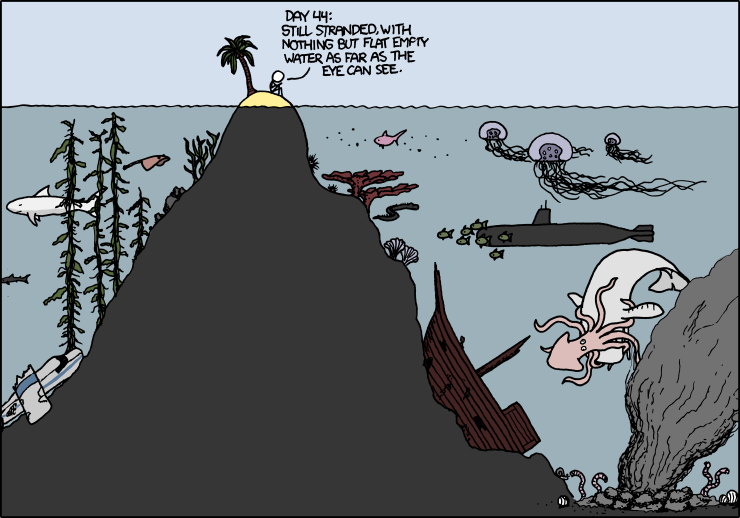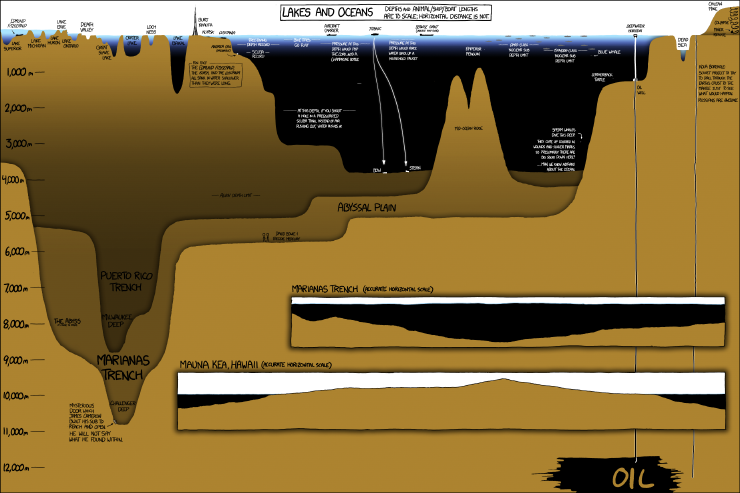By Florence Sullivan, MSc student, Oregon State University.
Earth day is a worldwide event celebrated annually on April 22, and is typically observed with beach, park, or neighborhood clean ups, and outreach events sponsored by environmental groups. Last year, environmentalists rejoiced when 195 nations signed the Paris Agreement – to “strengthen global response to the threat of climate change by keeping global temperature rise below 2 degrees C”.

This year, the enviro-political mood is more somber. Emotions in the GEMM Lab swing between anger and dismay to cautious optimism and hope. The anger comes from threatened budget cuts, the dismissal of climate science, and the restructuring of government agencies, while we find hope at the outpouring of support from our local communities, and the energy building behind the March for Science movement.

What is perhaps most striking about the movement is how celebratory it feels. Instead of marching against something, we are marching FOR science, in all its myriad forms. With clever signs and chants like “The oceans are rising, and so are we”, “Science, not Silence”, and “We’re nerds, we’re wet, we’re really quite upset” (it rained on a lot of marches on Saturday) echoing around the globe, Saturday’s Marches for Science were a cathartic release of energy, a celebration of like-minded people.

While millions of enthusiastic people were marching through the streets, I “Ran for Science” at the 20th annual National Ocean Science Bowl (NOSB) – delivering question sheets and scores between competitors and graders as 25 teams competed for the title of national champion! Over the course of the competition, teams of four high school students compete through rounds of buzzer-style multiple choice questions, worksheet style team challenge questions, and the Scientific Expert Briefing, a mock congressional hearing where students present science recommendations on a piece of legislation. The challenges are unified with a yearly theme, which in 2017 was Blue Energy: powering the planet with our ocean. Watching the students (representing 33 states!) compete is exciting and inspiring, because they obviously know the material, and are passionate about the subject matter. Even more encouraging though, is realizing that not all of them plan to look for jobs as research scientists. Some express interest in the arts, some in policy, or teaching or engineering. This competition is not just about fostering the next generation of leading marine scientists, but rather about creating an ocean-literate, and scientifically-literate populace. So, congratulations to Santa Monica High School, who took home the national title for the first time this year! Would you like to test your knowledge against some of the questions they faced? Try your luck here!

The GEMM Lab also recently participated in the Hatfield Marine Science Center’s Marine Science Day. It’s an annual open house where the community is invited to come tour labs, meet scientists, get behind the scenes, and learn about all the exciting research going on. For us as researchers, it’s a great day to practice explaining our work and its relevance to many different groups, from school children to parents and grandparents, from artists to fishermen to teachers, fellow researchers, and many others. This year the event attracted over 2,000 people, and the GEMM Lab was proud to be a part of this uniquely interactive day. Outreach events like this help us feel connected to our community and the excitement present in all the questions field during this event reassure us that the public still cares about the work that we do.

Our science is interdisciplinary, and we recognize the strength of multiple complimentary avenues of action to affect change. If you are looking to get involved, consider taking a look at these groups:
500 Women Scientists: “working to promote a diverse and inclusive scientific community that brings progressive science-based solutions to local and global challenges.” Read their take on the March for Science.
314Action: starting from Pi (3.14), their mission is “to (1) strengthen communication among the STEM community, the public and our elected officials, (2) Educate and advocate for and defend the integrity of science and its use, (3) Provide a voice for the STEM community on social issues, (4) Promote the responsible use of data driven fact based approaches in public policy and (5) Increase public engagement with the STEM Community through media.”
She should run: “A movement working to create a culture that inspires women and girls to aspire towards public leadership. We believe that women of all backgrounds should have an equal shot at elected leadership and that our country will benefit from having a government with varied perspectives and experiences.” https://peoplesclimate.org/
And finally, The March for Science is finishing up it’s week of action, culminating in the People’s Climate March on April 29.
How will you carry the cause of science forward?































































You must be logged in to post a comment.